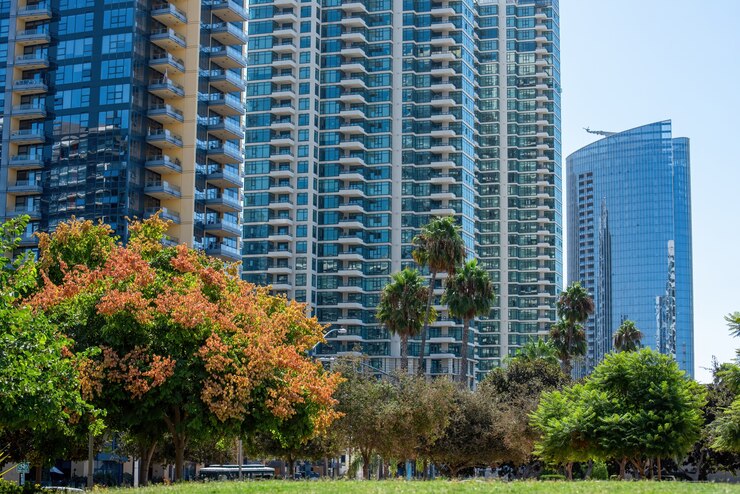A wood stove keeps your home warmly efficient during those cold months. But without proper maintenance, wood stove chimneys are very liable to begin suffering from a long list of problems—far more than just those connected with safety, but with performance, too. Here, we will look at some of the most common problems associated with a wood stove chimney, such as creosote buildup, leaks, and structural concerns, as well as ways to alleviate those problems.
1. Creosote Buildup
One of the most common and dangerous issues with a wood stove chimney is creosote buildup. Creosote is an extremely flammable residue that accumulates inside the chimney from burning wood. If left unchecked, it may be prone to self-ignition and cause a chimney fire.
- Solution: Chimneys should be cleaned regularly to reduce creosote buildup. Many homeowners use a kit for a wood stove chimney containing tools specifically designed for cleaning chimneys so that it is safe and efficient to use.
2. Chimney Leaks
Water penetration can be devastating to your chimney for a wood stove. Such leaks usually occur due to cracked masonry, missing chimney caps, or because of a poor seal around the roof.
- Solution: Inspect the chimney from time to time for signs of water damage, including discoloration, mold, and water stains. Most wood burning stove chimney kits are designed to come with some weather-resistant caps that may keep the rain and snow from entering the chimney, in a bid to protect your chimney.
3. Draft Issues and Smoke Spillage
Most importantly, a good draft should pull up and out of the home through a wood stove chimney. A bad draft may cause smoke to back down inside and even encourage a smoky condition, where the residents can be exposed to various health hazards.
- Solution: Ensure your chimney is the right size and well-insulated. Sometimes, draft can be achieved if you install or replace parts of your wood stove chimney, like the flue or the damper.
4. Blockages from Debris or Animals
Leaves, twigs, and animal nests commonly clog the airflow in a wood stove chimney, causing smoke to back up into a house.
- Solution: Mount a chimney cap if you haven’t yet. It is usually supplied as part of any kit when a chimney is put up as part of a wood stove system; it serves the purpose of having debris or animals inside not entering but letting smoke out.
5. Cracks and Structural Damage
This type of stove heats a chimney intensely over time, and extensive cracks may become visible in the liner or structure. These cracks reduce efficiency, lead to leaks, and start to pose a fire risk.
- Solution: Regular inspection of your chimney’s structure goes a long way. And if you do find a crack or some deterioration on your chimney, it’s best to attend to it right away. Good enough that some wood burning stove chimney kits are made with durable and heat-resistant parts—you have little chance of getting structural damage.
6. Rust and Corrosion
Rust and corrosion may compromise metal woodstove chimney parts, particularly in instances where moisture attacks or occurs with an inappropriate seal in the chimney.
- Solution: The metal parts should be regularly checked for rust and replaced if they show any signs of corrosion. A good kit for building a wood stove chimney will have several rust-proofed parts to make the chimney last for a long time.
7. Excessive Soot Accumulation
While soot is the natural result of burning wood, excessive soot buildup can actually be limiting airflow and reducing the chimney’s efficiency.
- Solution: Chimneys should be cleaned periodically. Many woodstove chimney kits come with cleaning brushes and rods, so keeping yours spick and span and the airflow optimal isn’t much of a chore.
8. Improper Installation of Chimney Parts
Problems related to chimney installation are fairly common, especially if someone installs it himself or with the wrong kit. There may be smoke backdraft, leakage, and even fire hazards coming from a chimney that is installed wrongly.
- Solution: Ensure that you install the right type of chimney kit for wood stoves. Wood stove chimney setup should ideally be carried out as per manufacturer guidelines; if not possible, consult a professional. Quality wood stove chimney parts ensured to fit well will bring down these risks.
9. Damage to the Chimney Liner
The liner of the chimney protects the walls within the chimney from heat and its byproducts from the burning wood. The liner can crack or degrade after years, which would allow smoke and gases to penetrate and enter the house.
- Solution: Have your liner inspected for any sort of tear and wear. You may opt for a heavy-duty liner that is offered in a kit of wood burning stove chimneys and is designed to be strong to withstand extreme temperatures and prevent crack-offs.
10. Warped or Misaligned Chimney Pipes
Over time, heat and moisture can warp or shift the position of chimney pipes. Sometimes, this issue will have a direct effect on the draft, lower efficiency, and even create leaks.
- Solution: Take time to inspect your chimney pipes regularly for alignment problems and replace the damaged ones. A complete kit for wood stove systems usually includes spares or replacement pipes.
Regular Maintenance: The Key to a Safe Chimney
Regular maintenance can prevent some common problems with wood stoves and chimneys. But still, you may want to invest in a high-quality wood stove chimney kit. A good kit makes cleaning and inspecting easier. Regular checks uncover potential problems much sooner, and your chimney works efficiently and safely all season long.
Conclusion
Whether you use the traditional wood-burning chimney of a traditional wood stove or one of the newer kits for a wood-burning stove, the wood stove heating system requires regular service to prevent most common problems like creosote buildup, leaks, and structural damage. Equipped with such knowledge of common issues and the way to manage them, you’ll keep your wood stove warm, safe, and efficient for purposes of heating.
Ready to maintain your wood stove chimney? Check out the quality wood stove chimney kits and parts on OutdoorBoiler.com, which make maintenance easy and efficient. Find many options designed to keep your chimney safe and running smoothly all season long.







